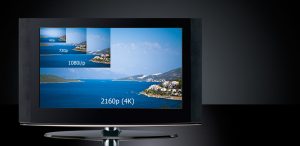
High Definition Multimedia Interface is the current standard for HD video playback. Capable of storing HD videos with surround sound, EDID handshaking signals, Ethernet and IR signals through a single cable, HDMI has consolidated its position within the industry as a standard for easy and efficient playback of high definition video files.
- There are several versions of HDMI cables:
- HDMI 1.0
- HDMI 1.1
- HDMI 1.2
- HDMI 1.2a
- HDMI 1.3
- HDMI 1.4
HDMI 1.4 cables represent the most advanced technology present on the market today, offering compatibility with the devices that have included the latest features. HDMI 1.4 added the following features to previous versions:
- Ethernet channel that supports 100 Mbit/ s (HEC)
- 4K x 2K Resolution (ie 3840 × 2160p)
- 3D support
- Audio return channel
In addition to the version and standard of a HDMI cable, we must also pay attention to its type. There are four types of HDMI cables:
- HDMI standard
- High Speed HDMI
- Standard HDMI with Ethernet
- High Speed HDMI with Ethernet
Regardless of the HDMI version you choose, it ensures compatibility with previous versions and allows the transmission of digital signals between the connected equipment. However, a proper choice of the type of HDMI cable allows it to adapt its functionality to the individual requirements of the user.
For example, if the HDMI cable must also transmit data packets to the Ethernet standard, we must choose a Standard HDMI cable with Ethernet or High Speed 4K HDMI cable with Ethernet.





